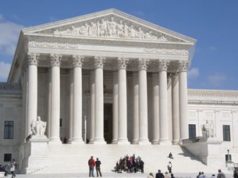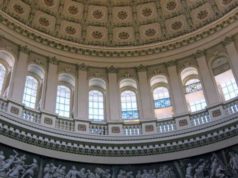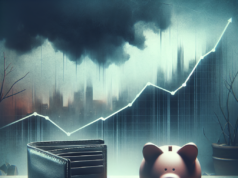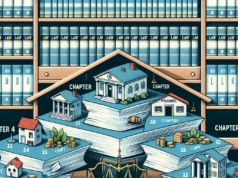
In recent months, the United States has witnessed a significant increase in personal bankruptcy filings, prompting concerns among financial experts and policymakers alike. This surge, which has seen a rise of nearly 30% compared to previous years, is reshaping the financial landscape for countless individuals and families. As economic pressures mount, understanding the underlying causes and implications of this trend is crucial for both those affected and the broader community.
Understanding the Recent Surge in Personal Bankruptcy Filings Across the Nation
The recent spike in personal bankruptcy filings has raised alarms across the nation, with reports indicating that thousands of individuals are seeking relief from their financial burdens. According to data from the American Bankruptcy Institute, the number of filings has surged to levels not seen since the aftermath of the 2008 financial crisis. This increase is not limited to any specific demographic; it spans various age groups, income levels, and geographical locations. The trend reflects a growing sense of financial distress among Americans, as many find themselves unable to cope with mounting debts and insufficient income.
Key Factors Contributing to the Rise in Personal Bankruptcy Rates in 2023
Several key factors have converged to drive the rise in personal bankruptcy rates this year. First and foremost, the lingering effects of the COVID-19 pandemic continue to impact the economy, with many individuals still recovering from job losses and reduced incomes. Additionally, rising inflation has led to increased costs for essential goods and services, straining household budgets. High-interest rates on credit cards and loans have further exacerbated the situation, making it increasingly difficult for individuals to manage their debts. Moreover, the end of pandemic-related financial assistance programs has left many without the safety nets they relied on during the crisis.
The Impact of Economic Conditions on Individual Financial Stability and Bankruptcy
Economic conditions play a pivotal role in shaping individual financial stability, and the current landscape is particularly challenging. The combination of stagnant wages and rising living costs has created a perfect storm for many families. As disposable income shrinks, individuals are forced to rely on credit to meet their basic needs, leading to a cycle of debt that can be difficult to escape. Furthermore, the uncertainty surrounding job security and the overall economy has left many feeling vulnerable, prompting them to consider bankruptcy as a viable option for regaining control over their financial futures.
Personal Stories: How Bankruptcy is Reshaping Lives and Financial Futures
The personal impact of bankruptcy is profound, with many individuals sharing their stories of hardship and resilience. For instance, Sarah, a single mother of two, found herself overwhelmed by medical bills and credit card debt after losing her job during the pandemic. After filing for bankruptcy, she described the relief of being able to start fresh, but also the emotional toll it took on her and her family. Similarly, John, a small business owner, faced insurmountable debts after his business struggled to recover post-COVID. His experience highlights the stigma surrounding bankruptcy, as he grappled with feelings of failure despite knowing it was a necessary step toward rebuilding his financial future. These narratives illustrate the complex emotions and challenges that accompany the decision to file for bankruptcy.
Legal Implications and Consequences of Filing for Personal Bankruptcy
Filing for personal bankruptcy carries significant legal implications that individuals must carefully consider. There are two primary types of personal bankruptcy: Chapter 7 and Chapter 13. Chapter 7 allows for the discharge of most unsecured debts but may require the liquidation of certain assets. In contrast, Chapter 13 involves a repayment plan that allows individuals to keep their assets while gradually paying off their debts over three to five years. Both options have long-term consequences, including a negative impact on credit scores and difficulties in obtaining loans in the future. Furthermore, the bankruptcy process can be complex and often requires the assistance of legal professionals, adding to the financial burden for those already in distress.
Strategies for Prevention: Managing Debt and Avoiding Bankruptcy in the Future
To mitigate the risk of bankruptcy, individuals can adopt several proactive strategies for managing their debt. Creating a comprehensive budget that accounts for all income and expenses is essential for identifying areas where spending can be reduced. Additionally, prioritizing debt repayment, particularly high-interest debts, can help individuals regain control of their financial situation. Seeking financial counseling or assistance from nonprofit credit counseling agencies can provide valuable guidance and resources for managing debt effectively. Furthermore, building an emergency fund, even a small one, can offer a financial cushion in times of unexpected expenses, reducing reliance on credit and the potential for bankruptcy.
The surge in personal bankruptcy filings in 2023 serves as a stark reminder of the economic challenges facing many Americans today. As individuals navigate the complexities of financial distress, it is crucial to understand the factors contributing to this trend and the implications of filing for bankruptcy. By sharing personal stories and exploring preventive strategies, we can foster a greater awareness of the importance of financial literacy and resilience in the face of adversity. As the nation grapples with these issues, it is imperative that we support those affected and work towards creating a more stable economic environment for all.




















